Everything You Need to Know About Podcasting Costs In 2025
In 2025, podcasting has solidified its position as a mainstream media powerhouse, with its evolving landscape offering unprecedented opportunities for content creators. The medium has shed its niche digital frontier image to become a multi-billion dollar industry experiencing explosive financial growth, driven by sophisticated technology, evolving consumer habits, and innovative monetization strategies.
The numbers speak volumes: according to recent industry data, 3.6 million podcasts have been created worldwide, releasing a combined 185 million episodes. As of September 2025, there are 605,122 active podcasts—a number that has hit record highs and continues to grow monthly. This growth isn't just in content creation; podcast advertising revenue is expected to surpass the $1 billion milestone in 2025, indicating robust monetization potential.
Why Understanding Podcast Costs Matters
For aspiring podcasters, recognizing the financial investment required is crucial for sustainable success. While the barrier to entry can be surprisingly low, strategic budget allocation often separates hobbyists from professionally sustainable shows. Those who understand both the obvious and hidden costs from the outset can avoid common pitfalls and make informed decisions that align with their creative ambitions and financial constraints.
This comprehensive guide will explore the full spectrum of podcasting costs—from equipment and software to hosting and marketing—providing a realistic financial roadmap for creators at every level. Whether you're starting with a minimal budget or planning a full-scale production, understanding these expenses will help you launch successfully in 2025's competitive audio landscape.
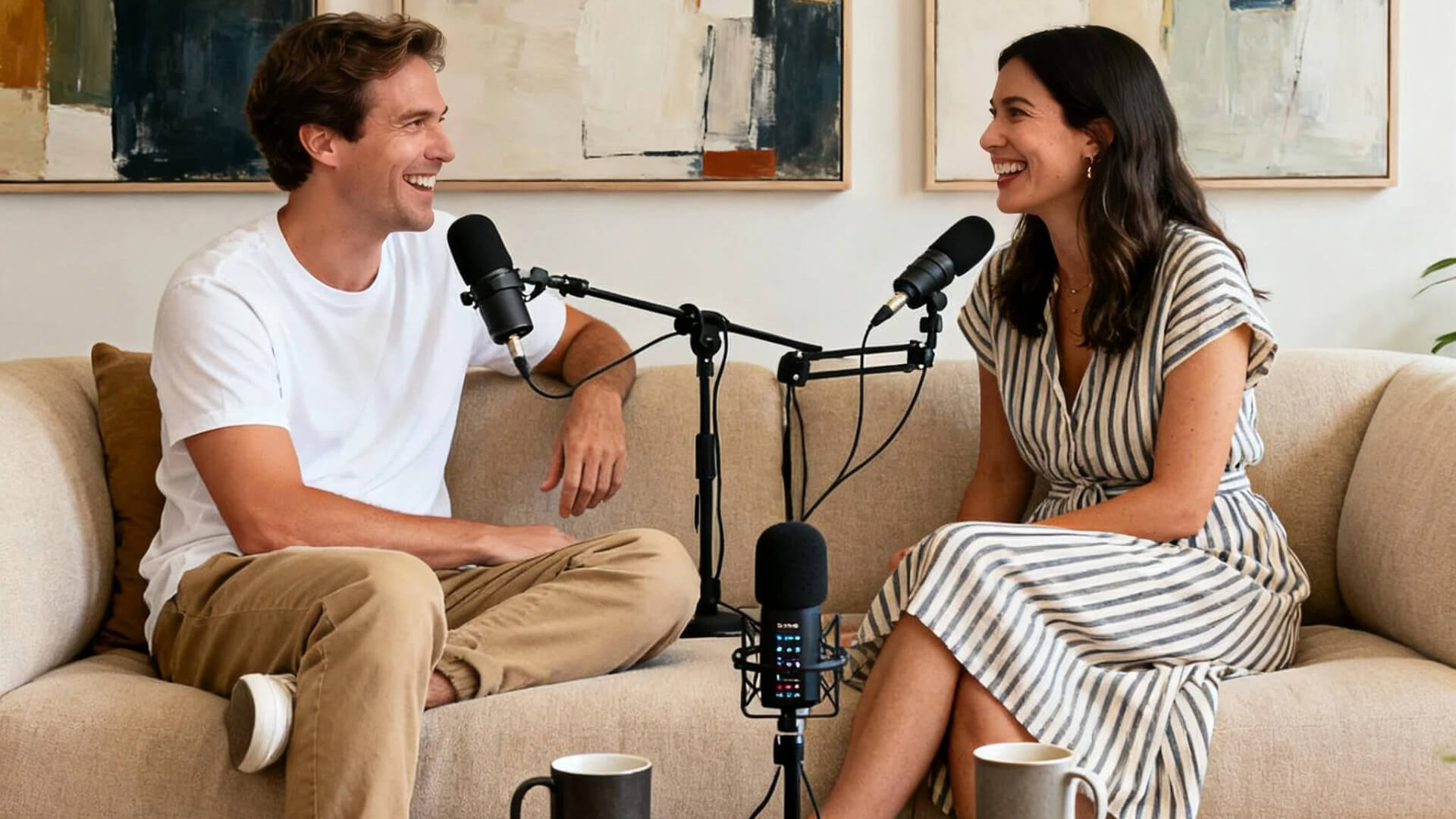
What You Need to Know About Podcasting Costs
Why Podcast Costs Vary Widely
Hobbyist vs. Professional
The financial investment required for podcasting varies dramatically based primarily on your objectives. Hobbyist podcasters who create content for passion or personal expression might spend under 500 initially with minimal ongoing costs. In contrast, **professional podcasters** building a business around their content can reasonably invest 5,000-$20,000 in startup costs alone, with significant monthly expenses for team, marketing, and infrastructure.
This divergence stems from different quality expectations, audience size targets, and monetization requirements. While a hobbyist might achieve acceptable audio quality with a $100 USB microphone in a quiet closet, professionals typically need studio-quality recording environments, professional editing, and strategic marketing to compete at the highest level.
One-Time vs. Recurring Expenses
Podcasting costs generally fall into two categories: one-time purchases and recurring subscriptions. Understanding this distinction helps in effective budget planning:
One-Time Costs:
- Microphones
- Headphones
- Audio interfaces
- Acoustic treatment
- Initial brand assets
Recurring Costs:
- Hosting platform fees
- Editing software subscriptions
- Music licensing fees
- Marketing & advertising
- Outsourced services
The most successful podcasters plan for both, recognizing that while equipment purchases might be one-time investments, they often require upgrades as the show grows and technology evolves.
DIY Production vs. Outsourcing
The decision between handling production yourself or hiring professionals represents one of the most significant cost variables in podcasting. DIY approaches dramatically reduce cash expenses but require substantial time investments and technical learning curves. Outsourcing production saves time and often delivers more polished results but increases ongoing costs substantially.
Many successful podcasters adopt a hybrid approach—handling tasks they excel at while outsourcing specialized functions like audio engineering or show note creation. This balanced strategy optimizes both quality and budget allocation.
Breaking Down Podcast Costs into Categories
Equipment: Microphone, Accessories, and Recording Gear
Audio quality remains the foundation of any successful podcast, and equipment choices directly impact your sound. The core equipment ecosystem includes:
- Microphones: Ranging from 50 USB models to 400+ broadcast-quality dynamic microphones like the Shure SM7B
- Headphones: Critical for accurate monitoring during recording and editing (50-300)
- Audio Interfaces: Convert analog signals to digital for computers without professional audio inputs (100-300)
- Acoustic Treatment: Materials to reduce echo and improve sound quality (50-500+)
- Accessories: Pop filters, stands, cables, and other essentials (30-150)
The pricing sweet spot for beginners typically falls between 100-300 for a complete starter kit, while professionals might invest $1,500+ in equipment alone.
For a detailed breakdown of these essentials, from beginner to pro tiers, check out our complete guide on Podcast Equipment
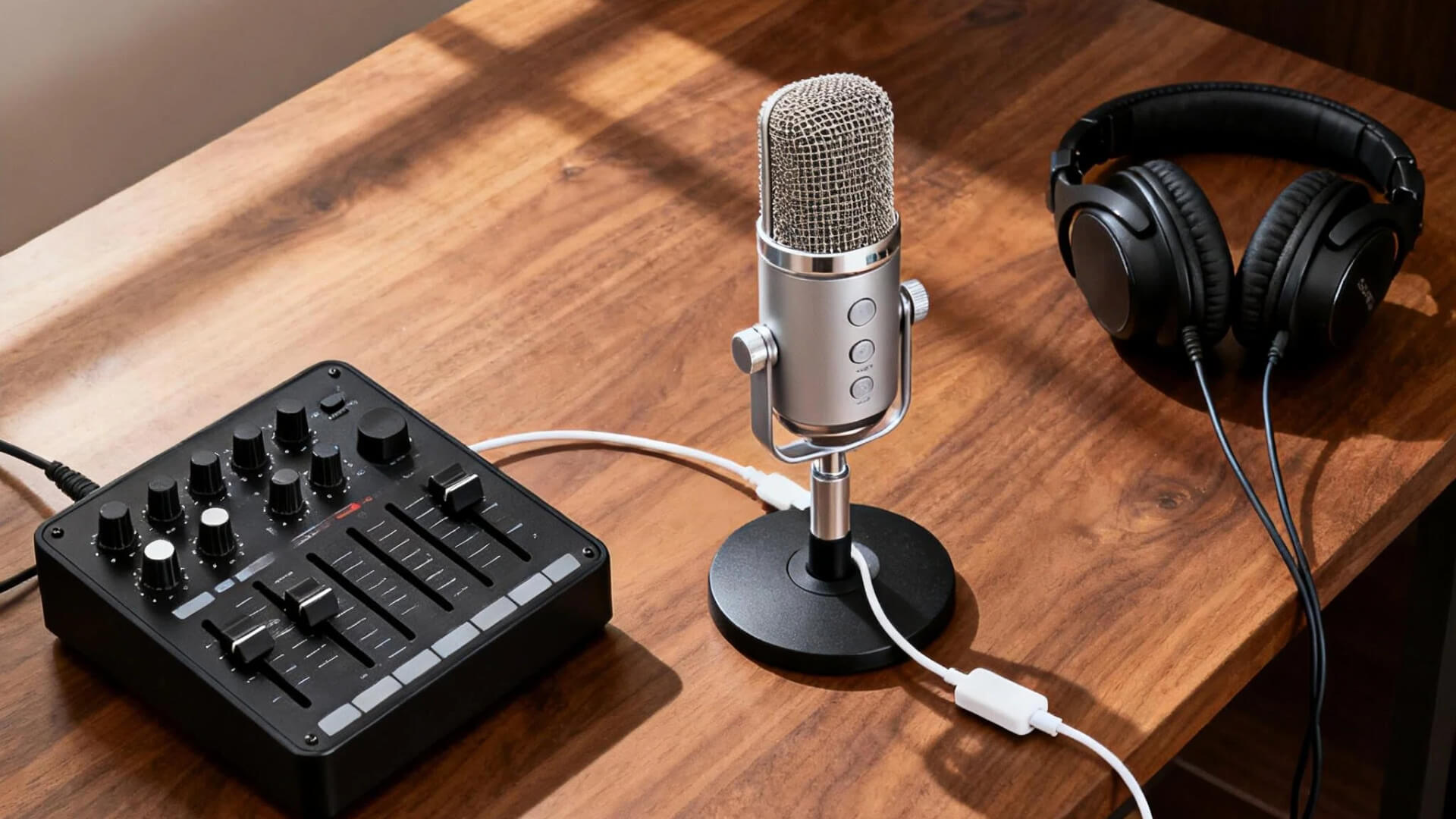
Software: Recording, Editing, and Production Tools
Modern podcasters have access to an extensive range of software options:
- Free options: Audacity, GarageBand, Anchor
- Mid-tier subscriptions: Descript (15/month), Hindenburg Pro (12/month)
- Professional tools: Adobe Audition (20.99/month), Pro Tools (29/month)
Many podcasters begin with free software and upgrade as their needs evolve and budget allows. The trend toward AI-enhanced editing has dramatically reduced production time for those using modern tools.
For a deeper dive into turning your raw audio into a polished episode, our guide on How to Edit a Podcast breaks down the entire process—from recording clean audio and removing filler words to adding music and exporting the final file for distribution.
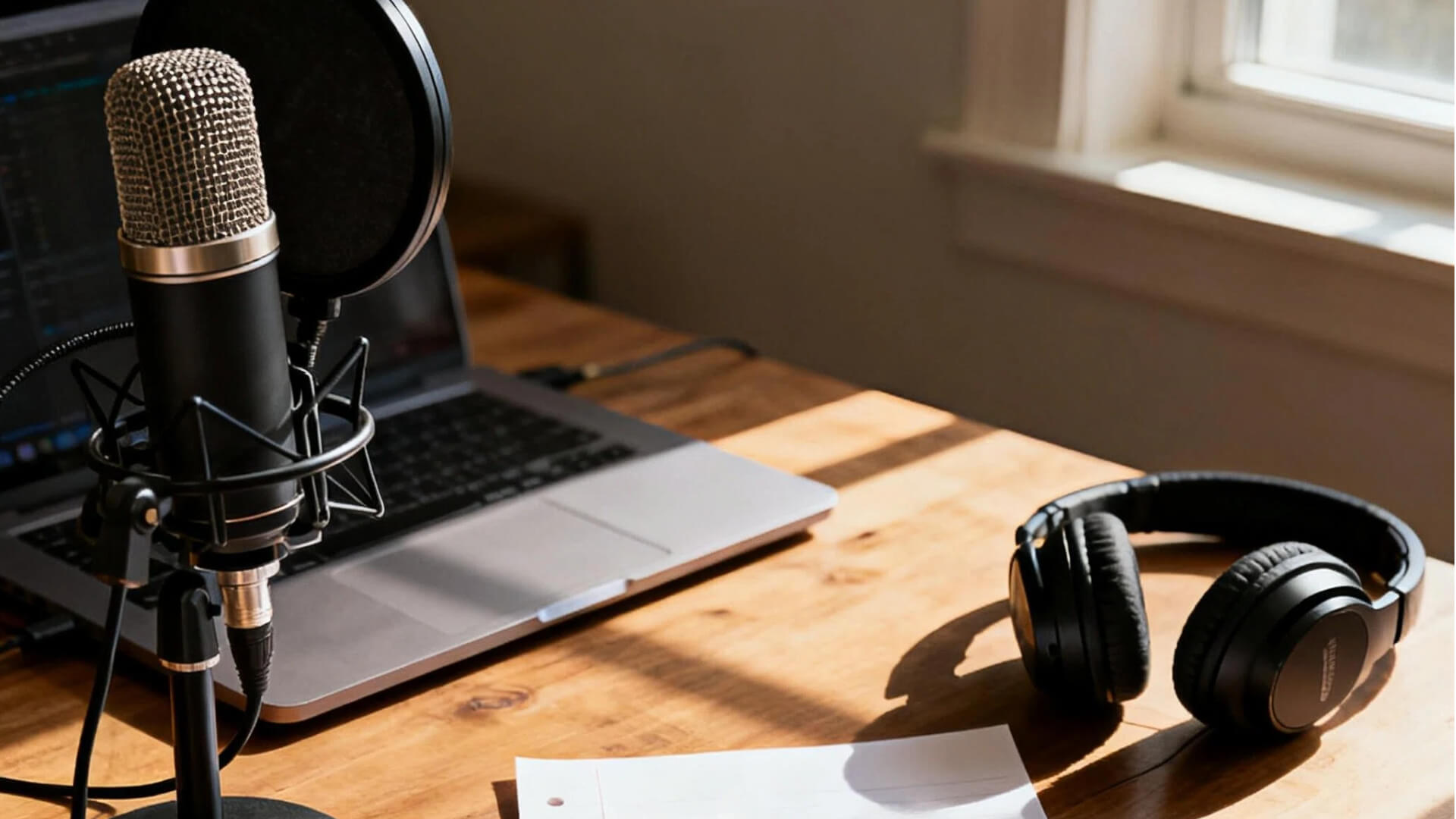
Hosting and Distribution Platforms
Unlike simply uploading audio files to a website, podcast hosting platforms provide the specialized infrastructure needed for reliable media delivery and RSS feed generation. Options range from free basic plans with limitations to premium services costing 50-500 monthly with advanced analytics and monetization features.
Platforms like Anchor (which hosts 55% of all shows), Buzzsprout (7%), and Transistor (4%) dominate the market, each offering different pricing tiers based on storage needs and listenership levels.
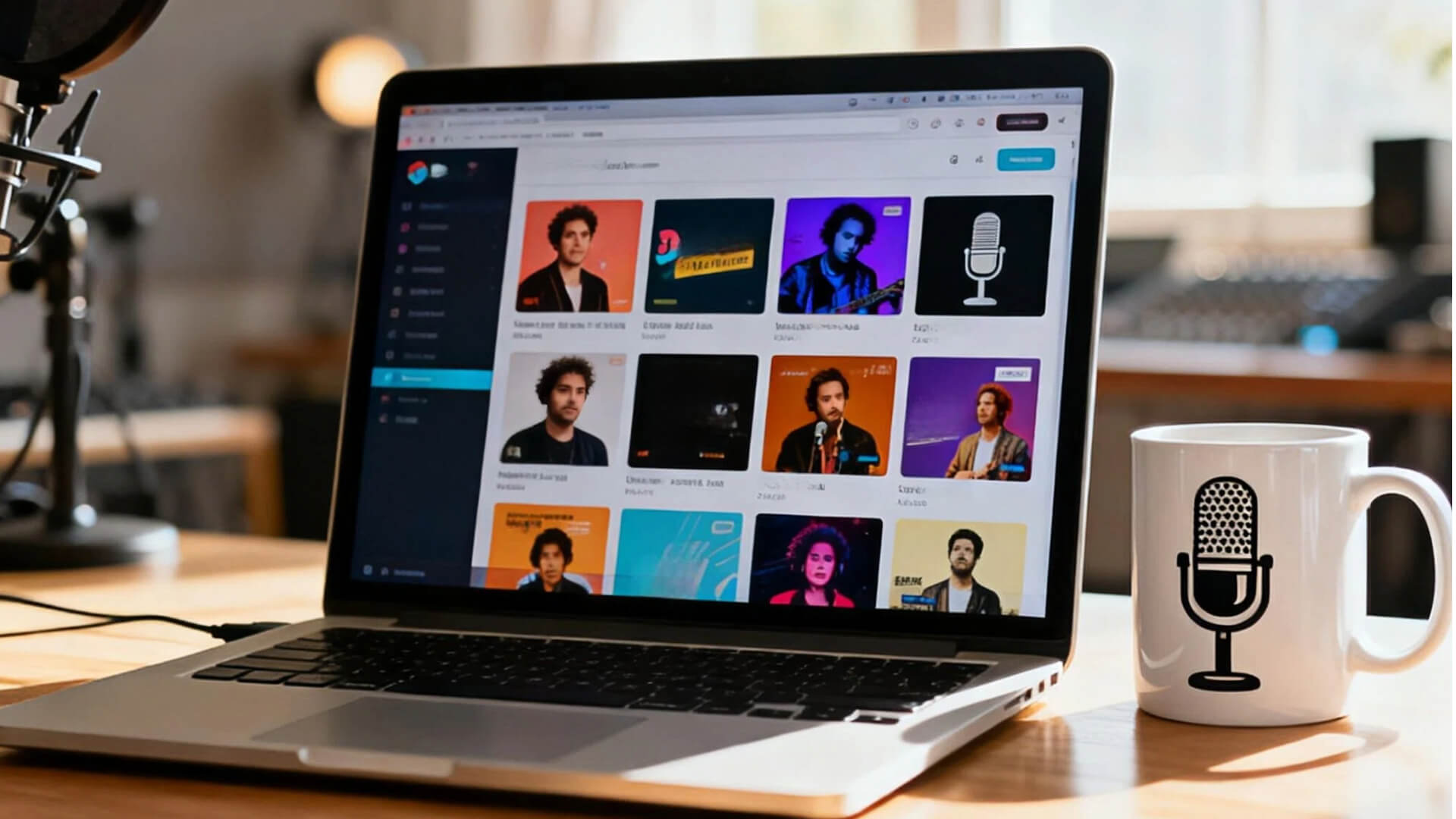
Branding: Cover Art, Music, and Visuals
Professional branding helps podcasts stand out in crowded directories. Investment categories include:
- Cover Art Design: 50-500 (DIY to professional custom design)
- Intro/Outro Music: 0-300 (royalty-free to custom compositions)
- Video Assets: 0-200/month (for video podcasts and promotional content)
With video podcasts growing three times faster than audio-only formats, visual branding investments are becoming increasingly important.
Detailed Cost Breakdown by Podcasting Level
Starting a Podcast on a Tight Budget — The Hobbyist Setup ($200-500)
The entry point for podcasting has never been more accessible. With strategic choices, beginners can launch with professional-sounding results on a minimal budget.
Essential Low-Cost Equipment
- Røde NT-USB Mini microphone - $99: Excellent quality with convenient connectivity
- Audio-Technica ATH-M20x headphones - $49: Accurate monitoring for precise editing
- Basic accessories - $30: Pop filter, desk stand, and windscreen
- DIY acoustic treatment - $20: Creative solutions using household items
Free and Affordable Software Solutions
- Audacity - Free: Comprehensive editing suite
- Anchor - Free: All-in-one hosting with distribution
- Canva - Free: Professional cover art creation
Free Hosting Options and Basic Distribution
Free hosting platforms like Anchor provide a legitimate starting point with limitations. These services typically include:
- Basic distribution to Apple Podcasts, Spotify, and Google Podcasts
- Limited analytics (usually download counts only)
- Storage and bandwidth restrictions
- Platform branding in some cases
While sufficient for testing concepts, most successful podcasts eventually migrate to paid hosting for better features and control.
Marketing with Zero to Low Budget
- Social Media: Organic promotion through existing channels
- Word-of-Mouth: Direct sharing with personal and professional networks
- Cross-Promotion: Appearing as a guest on other podcasts
- Community Engagement: Participating in relevant online forums and groups
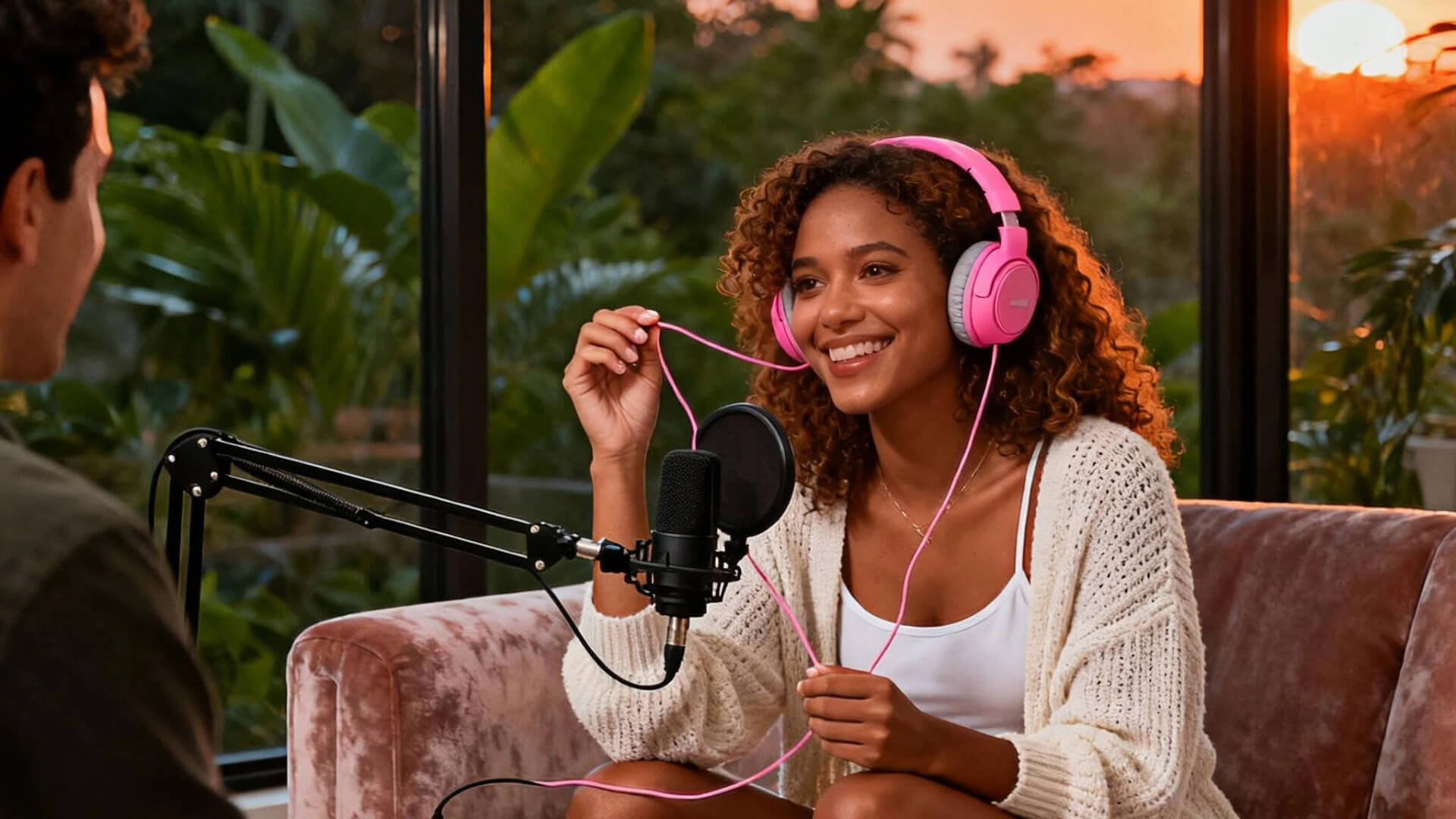
Mid-Level Podcast Setup — The Amateur Podcaster ($1,000-2,500)
As podcasts gain traction, strategic upgrades improve quality, efficiency, and growth potential.
Upgraded Equipment and Software Investments
- Shure SM7B microphone - $399: Broadcast-quality dynamic microphone
- Focusrite Scarlett 2i2 interface - $169: Professional preamps and connectivity
- Acoustic panels (8-pack) - $200: Studio-grade sound treatment
- Beyerdynamic DT 770 Pro headphones - $149: Critical listening accuracy
Paid Hosting Plans and Enhanced Distribution Tools
Mid-tier hosting plans ($12-24/month) from providers like Buzzsprout and Transistor offer:
- Detailed audience analytics
- Advanced distribution tools
- Customizable podcast websites
- Monetization opportunities
Branding with Custom Cover Art and Intro Music
- Professional Design: $200-300 for custom cover art from specialized designers
- Licensed Music: $50-150 for podcast-safe intro/outro music
- Consistent Brand Assets: $100-200 for complementary graphics for promotion
Basic Outsourcing Options
- Audio Editing: $50-100 per episode for basic cleanup and mastering
- Show Note Creation: $25-50 per episode for written content
- Specialized Tasks: Occasional help with marketing or technical challenges
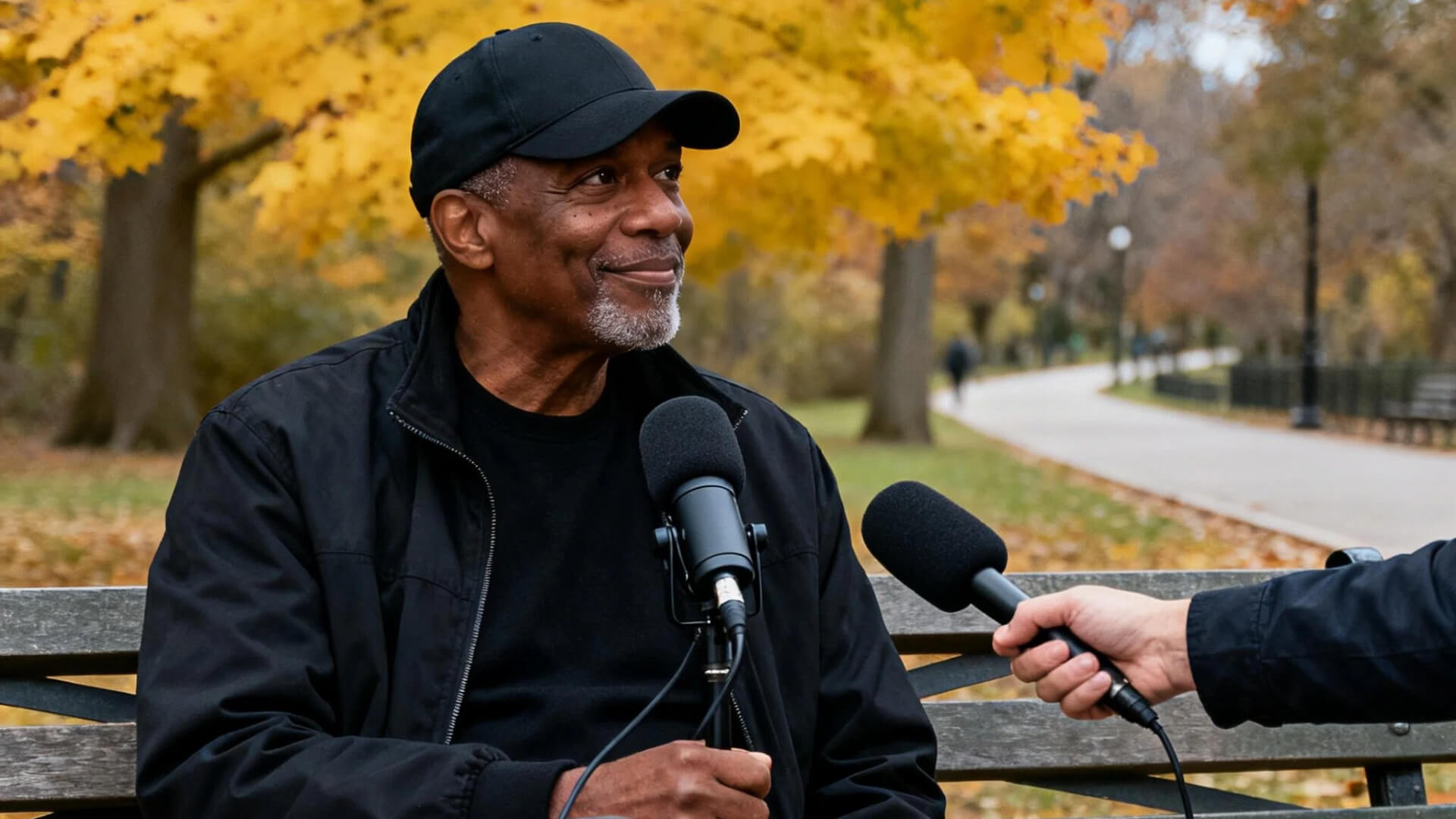
Professional Podcast Setup — The Business and Pro Podcaster ($5,000-20,000+)
Professional podcast operations treat audio content as a business, with corresponding investments in quality, team, and marketing.
High-End Studio-Quality Gear and Acoustic Treatment
- Multiple Shure SM7B microphones - $399 each
- RØDECaster Pro II - $699: All-in-one production studio
- Professional acoustic treatment - $1,000-2,000
- Backup equipment suite - $1,000
Premium Software and Production Suites
- Adobe Creative Cloud - $52.99/month for comprehensive media creation tools
- Professional plugins - $200-1,000 for specialized audio enhancement tools
- Project management software - $30-100/month for team coordination
- Analytics platforms - $50-300/month for detailed audience insights
Professional Hosting, Analytics, and Monetization Tools
Enterprise hosting plans ($75-199/month) from providers like Transistor.fm provide:
- Unlimited storage and bandwidth
- Advanced monetization tools
- Detailed demographic data
- Dedicated support
Hiring Full-Service Production Teams
- Audio Engineer: $300-800/month for consistent editing and mixing
- Producer: $500-2,000/month for content planning and quality control
- Marketing Specialist: $500-1,500/month for audience growth
- Virtual Assistant: $300-800/month for administrative tasks
Smart Budgeting and Cost-Reduction Strategies
Step-by-Step Podcast Budget Planner
Creating a realistic budget requires aligning financial investment with content goals and growth expectations.
Define Your Podcast Goals and Budget Range
Begin by establishing clear objectives:
- Passion Project: Minimal budget, maximum DIY
- Community Building: Moderate investment in quality and marketing
- Business Venture: Significant funding for professional results and growth
Prioritize Spending by Impact
Not all investments yield equal returns. Priority should follow this general sequence:
- Audio Quality (microphone and recording environment)
- Content Value (research, preparation, delivery)
- Consistent Publishing (workflow efficiency tools)
- Strategic Marketing (targeted audience growth)
- Scalable Infrastructure (team and systems)
Budget Allocation by Podcast Type:
Hobbyist Budget Breakdown:
- Equipment: 60%
- Software & Hosting: 10%
- Production & Editing: 0%
- Marketing: 5%
- Miscellaneous: 25%
Serious Creator Budget Breakdown:
- Equipment: 40%
- Software & Hosting: 15%
- Production & Editing: 15%
- Marketing: 15%
- Miscellaneous: 15%
Professional Budget Breakdown:
- Equipment: 20%
- Software & Hosting: 10%
- Production & Editing: 25%
- Marketing: 30%
- Miscellaneous: 15%
DIY Cost-Saving Tips Without Sacrificing Quality
Using Free Tools and Resources
- Free Software Stack: Audacity (editing), Anchor (hosting), Canva (graphics)
- Royalty-Free Music Resources: YouTube Audio Library, Free Music Archive
- Educational Content: Free podcasting courses, YouTube tutorials, community forums
Batch Recording and Efficient Editing
- Themed Recording Sessions: Multiple episodes recorded in single sessions
- Template-Based Workflows: Reusable project templates for faster editing
- Standardized Processes: Consistent intro/outro segments and show structures
Leveraging Community Support and Collaboration
- Cross-Promotion Networks: Partnering with complementary shows for mutual growth
- Skill Exchanges: Trading expertise with other creators (e.g., editing for graphic design)
- Mastermind Groups: Shared learning and accountability partnerships
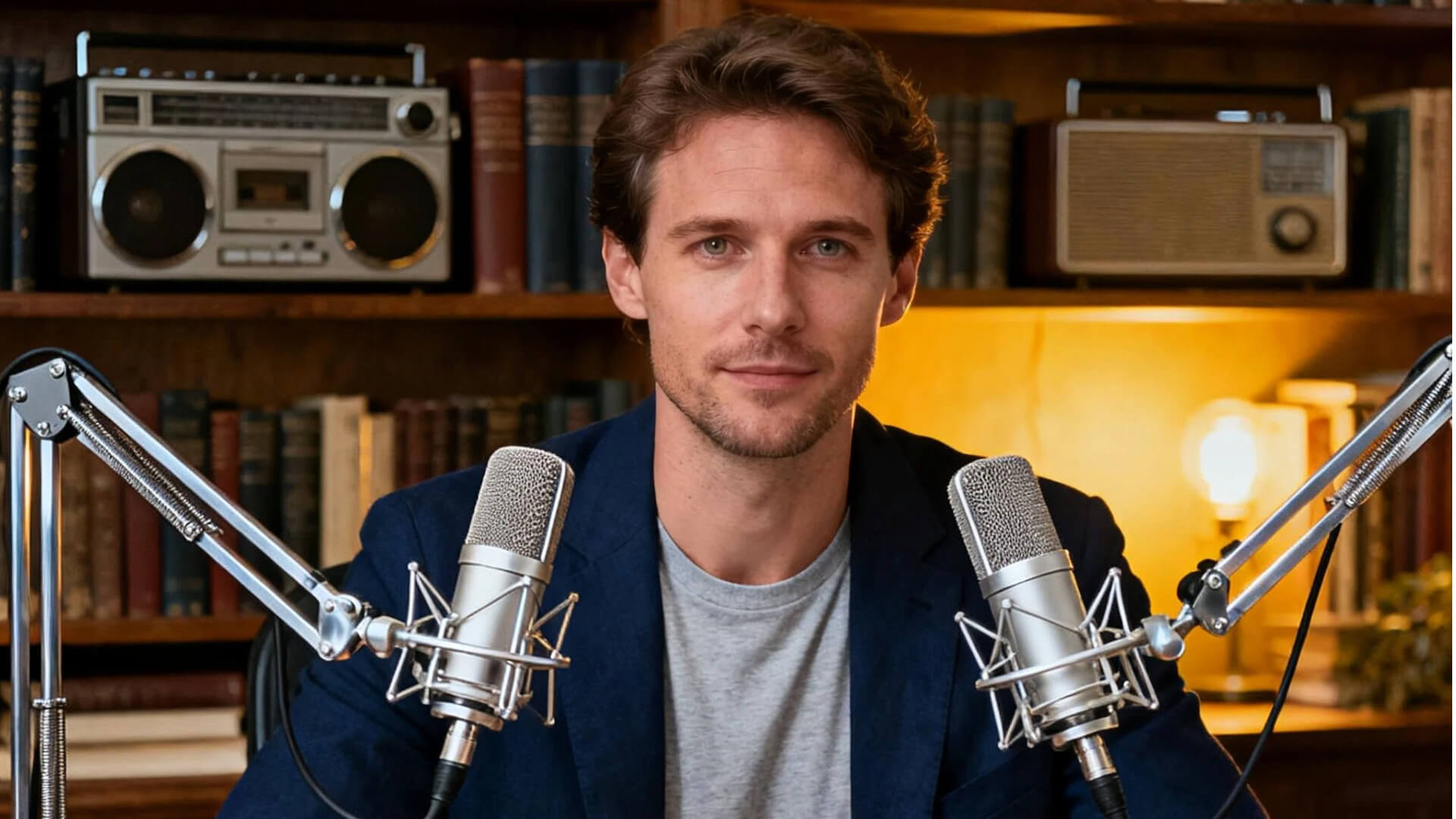
Real-World Examples and Case Studies
Case Study 1: Starting a Podcast on Zero Budget
The story of "The Diary of a CEO" by Steven Bartlett powerfully demonstrates that monumental success can start from the humblest beginnings. Bartlett began his podcasting journey in his bedroom with a basic laptop and a simple USB microphone. His initial financial investment was negligible, and his focus was squarely on raw, authentic conversations rather than production polish.
Despite the minimal production value at launch, his relentless focus on delivering actionable value and building a genuine connection with his audience resonated deeply. Through consistent publishing and organic promotion via his existing social media channels, the podcast gradually snowballed into one of the most popular global shows, eventually attracting top-tier brand sponsors like Google and eBay. This case proves that content quality and consistency can outweigh production precision in the early stages.
Case Study 2: Mid-Level Budget Podcast with Moderate Outsourcing
Audioboom's success story illustrates the power of strategic mid-level investment. The company reported $20.4 million in Q3 2025 revenue, achieving 18% year-on-year growth through smart expansion into video podcasting and strategic acquisitions.
Their approach balanced controlled spending with targeted investments:
- Focused equipment upgrades based on specific needs
- Selective outsourcing of editing and production
- Strategic marketing allocation toward highest-return channels
- Gradual team expansion aligned with revenue growth
This balanced approach allowed them to scale effectively while maintaining profitability, demonstrating that moderate, strategic investment often outperforms both extreme frugality and excessive spending.
Emerging Technologies and Their Impact on Podcasting Costs
AI and Automation Tools Reducing Production and Editing Costs
Artificial intelligence is revolutionizing podcast production economics. AI-powered tools can now handle time-intensive tasks like audio cleanup, transcription, and even content repurposing with surprising sophistication.
Platforms like AIPodify demonstrate how AI-generated podcast content is becoming increasingly viable, using multiple large language models to convert text-based content into natural audio conversations. While not replacing human creativity, these tools dramatically reduce production time—in some cases by up to 70% for routine tasks.
The economic implication is significant: what previously required hours of human editing can now be accomplished in minutes, potentially saving hundreds of dollars per episode in production costs while maintaining quality standards.
Conclusion: Building Your Podcast Sustainably
What to Expect When Budgeting for Your Podcast
Successful podcast budgeting in 2025 requires balancing realistic financial planning with strategic ambition. The most sustainable approaches share several characteristics:
- Start Appropriately: Match initial investment to your skills, goals, and resources
- Plan for Evolution: Budget for regular equipment and skill upgrades
- Balance Quality and Consistency: Good enough audio published regularly beats perfect audio published sporadically
- Measure ROI: Track which investments actually drive audience growth and engagement
Planning Your Podcast Launch
Your podcasting journey begins with action, not perfection. Follow this phased approach for sustainable growth:
- Validation Phase (Weeks 1-2): Test your concept with minimal equipment
- Foundation Building (Months 1-3): Establish consistent publishing rhythm
- Optimization Phase (Months 4-6): Refine based on audience feedback and analytics
- Growth Phase (Months 7-12): Strategic investments in quality and marketing
Remember that the podcasting landscape of 2025 offers more tools and opportunities than ever before. By starting where you are, investing strategically, and focusing on providing genuine value to your audience, you can build a successful podcast that grows with you over time.
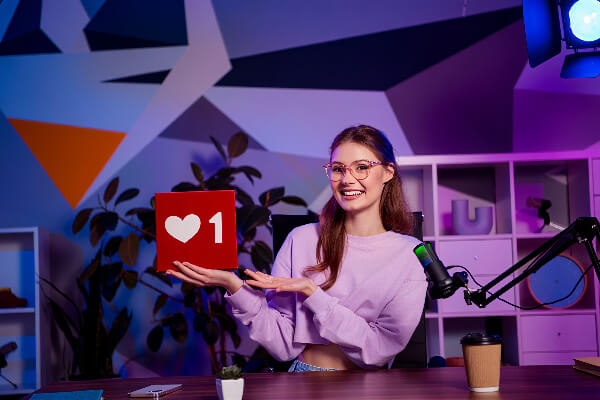
Ultimate Guide To How To Create Engaging Podcast Episodes
In this guide, we’ll walk you through how to create engaging podcast episodes step by step. You’ll learn practical content creation techniques, ways to increase your podcast’s visibility, and effective promotion strategies.
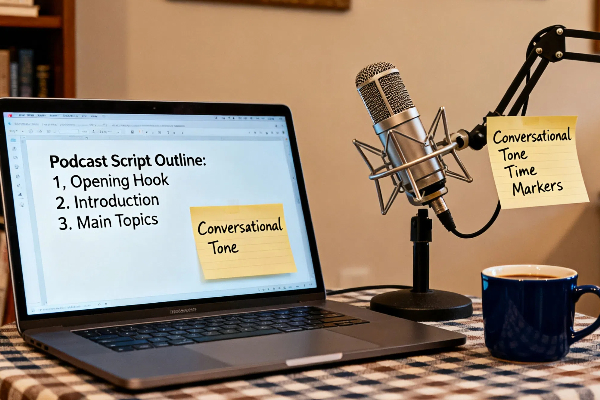
How to Write a Podcast Script: The Complete Guide with Templates
A great podcast script is your secret weapon. It's the roadmap that transforms your ideas into a structured, engaging story, ensuring every moment captivates your audience. Far from just words on a page, a script—whether a detailed manuscript or a simple outline—banishes recording anxiety and streamlines editing, letting you focus on delivering a powerful, professional show.